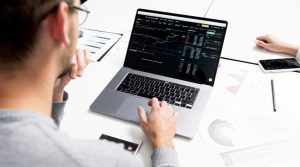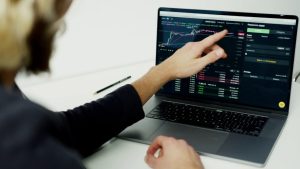Table of Contents
In the high-stakes world of cryptocurrency trading, every edge counts. With markets operating 24/7 and volatility levels that can make or break portfolios in hours, traders must rely on more than gut feelings.
Enter backtesting, a vital tool in the arsenal of any serious crypto trader. Backtesting involves simulating a trading strategy on historical data to evaluate its effectiveness before committing real capital.
It provides a scientific foundation for assessing potential profitability, risk exposure, and trade frequency.
Backtesting is widely used in traditional finance, but its importance is magnified in the crypto world due to the market’s youth, volatility, and lack of long-term regulatory structures.
Whether you’re building a momentum strategy, a mean-reversion approach, or a complex algorithmic trading bot, backtesting helps refine the logic and parameters of your system using actual past data.
In this article, we explore the mechanics, benefits, and limitations of backtesting crypto trading strategies.
We’ll cover practical steps, provide case studies, and recommend tools, including platforms like Trader AI, which integrates backtesting features with AI-powered analytics to deliver better trading insights.
What Is Backtesting in Crypto Trading?

Backtesting is the process of applying a trading strategy to historical market data to determine how it would have performed.
This simulation helps traders validate ideas, identify flaws, and fine-tune strategy parameters.
Core Components of Backtesting:
- Historical Data: Includes OHLC (open, high, low, close) prices, volume, and market depth.
- Trading Strategy: Defined entry and exit rules, risk management techniques.
- Performance Metrics: Includes profit/loss, drawdown, win rate, Sharpe ratio, and more.
A well-executed backtest provides a glimpse into how a strategy might behave under various market conditions.
Why Backtesting Is Critical for Crypto Traders?
- Quantifying Strategy Viability: Backtesting offers data-backed insights that either confirm or debunk assumptions. This prevents capital from being deployed on unproven ideas.
- Risk Management: By analyzing historical drawdowns and losses, traders can assess risk levels and adjust position sizes accordingly.
- Fine-Tuning Strategies: Minor adjustments in parameters such as stop-loss, take-profit, or moving average periods can have massive effects on results. Backtesting allows for such experimentation safely.
- Enhancing Confidence: Executing a strategy in a live market is nerve-wracking. A backtested and verified plan gives traders confidence to stick with it during rough patches.
How to Backtest a Crypto Trading Strategy?
Step 1: Define the Strategy
Include clear rules:
- Entry signals (e.g., RSI < 30)
- Exit signals (e.g., RSI > 70)
- Stop-loss/take-profit levels
- Capital allocation per trade
Step 2: Obtain Quality Historical Data
- Use data from reputable exchanges (e.g., Binance, Coinbase)
- Ensure data accuracy, especially for lower timeframes
- Consider using platforms like Trader AI, which integrate clean, curated datasets
Step 3: Choose a Backtesting Tool
Options include:
- TradingView Pine Script
- Python (Backtrader, Zipline)
- Crypto-specific platforms like 3Commas, QuantConnect, or Trader AI
Step 4: Run the Simulation
Feed the strategy and data into your chosen backtesting tool. Analyze outputs such as net profit, max drawdown, number of trades, and win/loss ratios.
Step 5: Analyze and Optimize
Review the results. Is the strategy overfitted? Does it hold across different timeframes? Adjust and repeat the process until satisfied.
Real-World Case Studies

Case Study 1: RSI-Based Strategy
A trader used a basic RSI < 30 (buy) and RSI > 70 (sell) strategy on BTC/USD hourly data from 2019–2021.
The backtest showed a modest annual return of 14% with a 2:1 risk-reward ratio. However, frequent false signals during sideways markets indicated the need for volume confirmation.
Case Study 2: AI-Enhanced Momentum Strategy
Using Trader AI, a trader incorporated AI-driven sentiment analysis to filter momentum trades.
Backtests showed a 25% increase in return compared to the original strategy and significantly reduced drawdowns during volatile months.
Pros and Cons of Backtesting
Pros:
- Data-driven decision making
- Cost-effective strategy testing
- Identifies performance bottlenecks
- Can prevent significant financial loss
Cons:
- Past performance ≠ future results
- Overfitting risk (too tailored to historical data)
- Doesn’t account for slippage or real-time liquidity
- Psychological variables ignored
Common Mistakes in Backtesting

- Curve Fitting: Tweaking a strategy to perfectly fit historical data but fail in live trading
- Ignoring Fees and Slippage: Results appear inflated
- Lack of Out-of-Sample Testing: Using the same dataset for both tuning and testing creates bias
- Survivorship Bias: Ignoring failed or delisted coins that would have skewed real results
Avoiding these pitfalls enhances the reliability of your simulations.
Conclusion
Backtesting is not just a step it’s a cornerstone in building successful crypto trading systems.
It offers a safe environment to test, iterate, and improve your strategies without financial risk. However, it should be complemented with live forward testing and adaptive risk management to truly be effective.
AI-enhanced platforms like Trader AI take backtesting to a new level by combining historical analysis with real-time sentiment tracking, machine learning, and portfolio optimization.
These tools reduce human bias and increase the odds of crafting profitable trading systems.
In an ever-changing market, traders who test and optimize their strategies systematically will always outperform those relying on instincts. Embrace backtesting as your strategy lab and use it to trade smarter.
FAQs
What is backtesting in crypto trading?
Backtesting is the simulation of a trading strategy on historical price data to evaluate how it would have performed.
Why is backtesting important?
It helps assess a strategy’s viability, identify flaws, and prevent costly real-time mistakes.
Can backtesting guarantee profits?
No. While helpful, past results don’t predict future performance due to changing market conditions.
What tools can I use for backtesting?
Popular tools include TradingView, Python libraries (Backtrader), and platforms like Trader AI.
How much data should I use for backtesting?
Ideally, use 1–3 years of data across different market conditions for robust results.
What is overfitting in backtesting?
Overfitting occurs when a strategy is too customized to past data, leading to poor performance in live markets.
Should I include trading fees in backtests?
Yes, always factor in trading fees, slippage, and latency to ensure realistic simulations.
How often should I backtest?
Every time you change a strategy or apply it to a new market. Continuous iteration is key.
Is backtesting useful for all types of strategies?
Yes, thouagh it’s more effective for rule-based, systematic strategies than purely discretionary ones.
What is the difference between backtesting and paper trading?
Backtesting uses historical data, while paper trading uses real-time data without real money, offering more realistic execution feedback.


